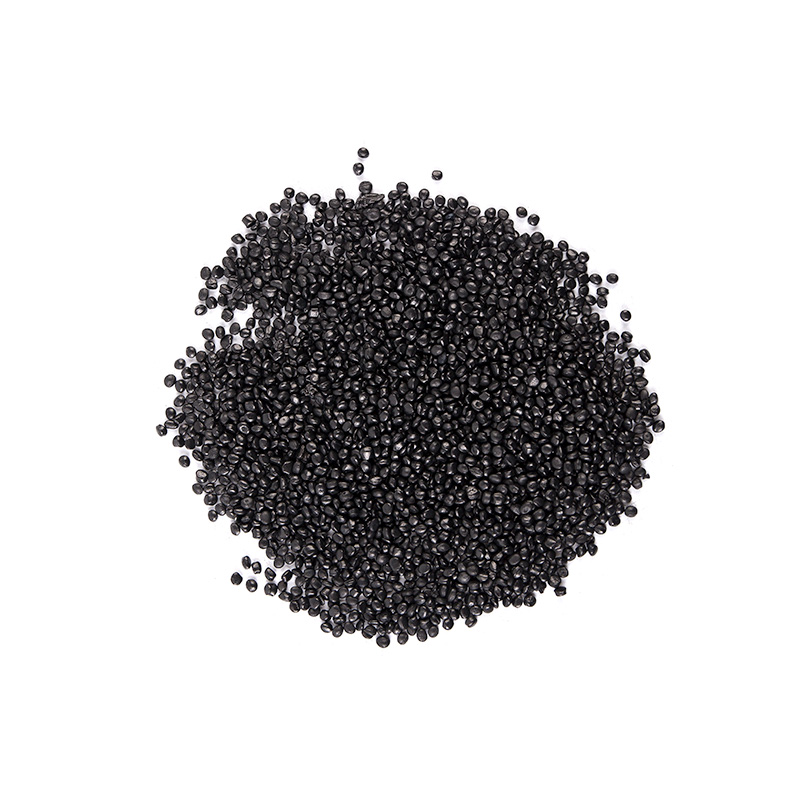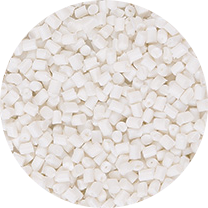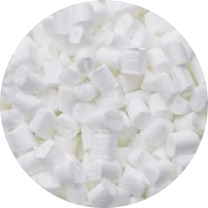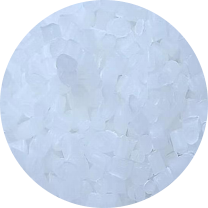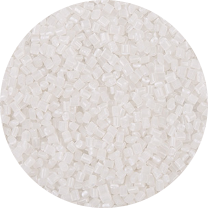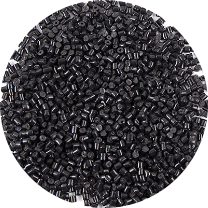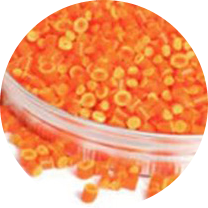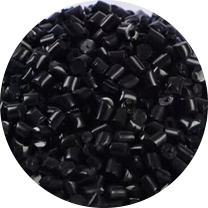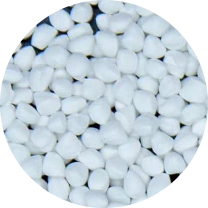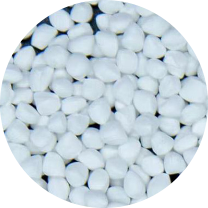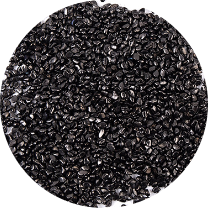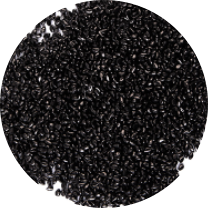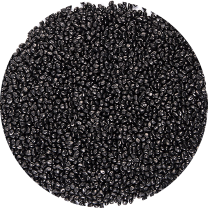Ultimate Guide to Carbon Black Masterbatch: Properties, Applications, and Selection
- 1 What is Carbon Black Masterbatch and How is it Produced?
- 2 Key Advantages of Using Carbon Black Masterbatch
- 3
- 4 Applications of Carbon Black Masterbatch Across Industries
- 5 How to Choose the Right Carbon Black Masterbatch
- 6 FAQ
- 6.1 What is the difference between carbon black masterbatch and carbon black powder?
- 6.2 How much carbon black masterbatch should I add to my plastic?
- 6.3 Can carbon black masterbatch be used for food packaging?
- 6.4 Does carbon black masterbatch make plastic conductive?
- 6.5 How does carbon black protect plastic from UV degradation?
Carbon black masterbatch is a concentrated mixture of a high percentage of carbon black pigment evenly dispersed within a carrier resin. It is a fundamental additive in the plastics industry, primarily used to impart a deep, permanent black color to a wide array of polymer products. Beyond aesthetics, it significantly enhances critical material properties such as UV protection and conductivity. This comprehensive guide delves into the world of carbon black masterbatch, exploring its manufacturing, benefits, diverse applications, and how to select the perfect type for your project.
What is Carbon Black Masterbatch and How is it Produced?
The production of carbon black masterbatch is a precise engineering process designed to achieve a uniform and agglomerate-free dispersion of carbon black within a polymer matrix. This high level of dispersion is crucial for achieving consistent color strength and optimal performance properties in the final product. The process typically involves several key stages to ensure quality and consistency.
- Raw Material Selection: The choice of carbon black pigment (based on its particle size and structure) and carrier resin (e.g., PE, PP) is the first critical step, determining the masterbatch's end-use.
- Weighing and Feeding: Precise amounts of carbon black, carrier resin, and other additives are measured and fed into the compounding system.
- Melt Compounding: The mixture is heated and subjected to high shear forces in a twin-screw extruder, which breaks down carbon black agglomerates and distributes them evenly throughout the molten carrier resin.
- Pelletizing: The homogenized melt is then extruded through a die, cooled, and cut into small, uniform pellets for easy handling and feeding during the final plastics processing stage.
Key Advantages of Using Carbon Black Masterbatch
Opting for a masterbatch form over raw carbon black powder offers numerous technical and operational advantages for compounders and plastic processors. These benefits streamline production, improve product quality, and enhance workplace safety.
- Superior Dispersion: The masterbatch production process ensures a near-perfect dispersion that is difficult to achieve by directly mixing powder into a polymer, leading to consistent color and material properties.
- Dust-Free and Clean Handling: Pelletized form eliminates the messy and hazardous dust associated with carbon black powder, improving factory hygiene and operator safety.
- Cost-Effectiveness: It simplifies the production process for the end-user, reducing energy consumption and potential material waste compared to in-house compounding from scratch.
- Precise Dosing and Consistency: The uniform pellet size allows for accurate and consistent dosing into the processing machine, ensuring batch-to-batch reproducibility.
Enhanced UV Protection for Plastics
One of the most valued functional benefits of carbon black is its exceptional ability to shield plastics from the degrading effects of ultraviolet (UV) radiation. When properly dispersed, carbon black acts as a highly efficient light absorber, protecting the polymer chains and preventing embrittlement, color fading, and loss of mechanical properties. The effectiveness of UV protection for plastics with carbon black is influenced by the type and concentration of carbon black used.
- Mechanism: Carbon black absorbs harmful UV radiation and converts it into less damaging heat energy.
- Particle Size Impact: Finer particle sizes generally provide more surface area and superior UV absorption compared to coarser grades.
- Loading Level: A typical loading of 2-3% is often sufficient for significant UV stabilization, though higher loadings may be used for extreme outdoor exposure.
| Carbon Black Type | Typical Particle Size (nm) | Relative UV Protection Effectiveness |
| High Color Furnace Black | 13-15 | Excellent |
| Medium Color Furnace Black | 17-20 | Very Good |
| Low Color Furnace Black | 50-60 | Good |
RY-3209 Carbon Black Masterbatch Dyestuff Granule For Plastic/HDPE/PE/PP Pipes
Applications of Carbon Black Masterbatch Across Industries
The versatility of carbon black masterbatch makes it an indispensable material in countless everyday and industrial products. Its primary function is coloring, but its functional properties like UV resistance and conductivity expand its use into highly specialized applications.
- Packaging: Used in black trash bags, stretch film, and food packaging containers for both color and UV protection.
- Agriculture: Critical in the production of mulch films, irrigation pipes, and silage sheets, where its UV resistance extends the product's service life under harsh sunlight.
- Automotive: Found in interior trims, under-hood components, and exterior parts like bumper fascias and mirror housings.
- Construction: Used for pipes, cables, geomembranes, and roofing materials, leveraging its durability and weather resistance.
- Consumer Goods: Appliances, furniture, and electronic housings often utilize carbon black for a consistent and appealing black finish.
Conductive Carbon Black Compounds for ESD Applications
Beyond coloring, specific types of carbon black are engineered to create a conductive network within an otherwise insulating polymer. These conductive carbon black compounds are essential for manufacturing materials that dissipate static electricity, preventing damage to sensitive electronic components or avoiding sparks in potentially explosive environments.
- Principle: At a certain loading level (percolation threshold), carbon black particles form a continuous conductive pathway through the polymer.
- Key Applications: Antistatic packaging trays, hopper bins, fuel lines, and flooring in operating theaters or cleanrooms.
- Material Considerations: Achieving conductivity requires a higher loading of specialized carbon black, which can impact the polymer's mechanical properties and cost.
How to Choose the Right Carbon Black Masterbatch
Selecting the appropriate carbon black masterbatch is not a one-size-fits-all decision. It requires a careful evaluation of your final product's requirements, the base polymer, and the processing conditions. Making the right choice ensures optimal performance, cost-efficiency, and product quality. Here are the critical factors to guide your selection of carbon black masterbatch.
- Base Polymer Compatibility: The carrier resin of the masterbatch must be compatible with the host polymer to ensure good mixing and avoid delamination. For instance, a PE-based masterbatch is suitable for polyethylene applications.
- Desired Color Strength and Undertone: Different carbon black grades produce different jetness levels and undertones (blue or brown). Testing samples is crucial to match the exact color requirement.
- Functional Requirements: Determine if you need only color or additional properties like UV stability, conductivity, or improved mechanical strength.
- Processing Method: Consider the shear and thermal history of your process (e.g., injection molding vs. film blowing) as it can affect the final dispersion and color.
- Regulatory Compliance: For applications like food contact or toys, the masterbatch must meet specific regulatory standards (e.g., FDA, EU 10/2011).
Carbon Black Dispersion in Polymers
The single most critical factor determining the effectiveness of a masterbatch is the quality of carbon black dispersion in polymers. Poor dispersion leads to defects, weak mechanical properties, inconsistent color, and inadequate UV protection. A well-dispersed system maximizes the surface area of the carbon black, ensuring uniform performance throughout the product.
- Indicators of Good Dispersion: A smooth, speckle-free surface, high gloss (if desired), consistent electrical properties, and superior mechanical strength.
- Indicators of Poor Dispersion: Visible specks or streaks, low gloss, weak spots in the material, and uneven color.
- Measurement: Dispersion quality can be assessed using laboratory techniques like optical microscopy or filter pressure value (FPV) testing.
FAQ
What is the difference between carbon black masterbatch and carbon black powder?
Carbon black masterbatch is a pre-dispersed, pelletized form of carbon black in a carrier resin, while carbon black powder is the raw, pure pigment. The masterbatch offers dust-free handling, easier and cleaner processing, and guarantees a consistent, high-quality dispersion that is challenging to achieve with powder, which can cause agglomeration and contamination.
How much carbon black masterbatch should I add to my plastic?
The recommended dosage, or let-down ratio, typically ranges from 1% to 5% by weight, but it depends entirely on the desired darkness, the specific masterbatch's concentration, and the functional requirement (e.g., UV protection may require 2-3%, while conductivity may require >15%). The masterbatch supplier provides a recommended ratio, which should be validated through small-scale trials.
Can carbon black masterbatch be used for food packaging?
Yes, but only if the masterbatch is explicitly manufactured and certified to comply with relevant food contact regulations in your region, such as the U.S. FDA (Food and Drug Administration) or EU 10/2011 standards. It is crucial to always request a certificate of compliance from your supplier for such applications.
Does carbon black masterbatch make plastic conductive?
Standard colorant masterbatches do not make plastic conductive. However, specialty masterbatches formulated with high loadings of specific conductive carbon black compounds are designed to create an electrically conductive network within the plastic, providing ESD (Electrostatic Discharge) or EMI (Electromagnetic Interference) shielding properties.
How does carbon black protect plastic from UV degradation?
Carbon black is an extremely effective UV stabilizer. It functions by absorbing the high-energy UV radiation from sunlight and converting it into low-energy heat, which is then dissipated. This process prevents the UV rays from breaking down the polymer chains, thereby enhancing UV protection for plastics, reducing embrittlement, cracking, and color fading, and significantly extending the product's outdoor lifespan.


 English
English 中文简体
中文简体 한국어
한국어 عربى
عربى